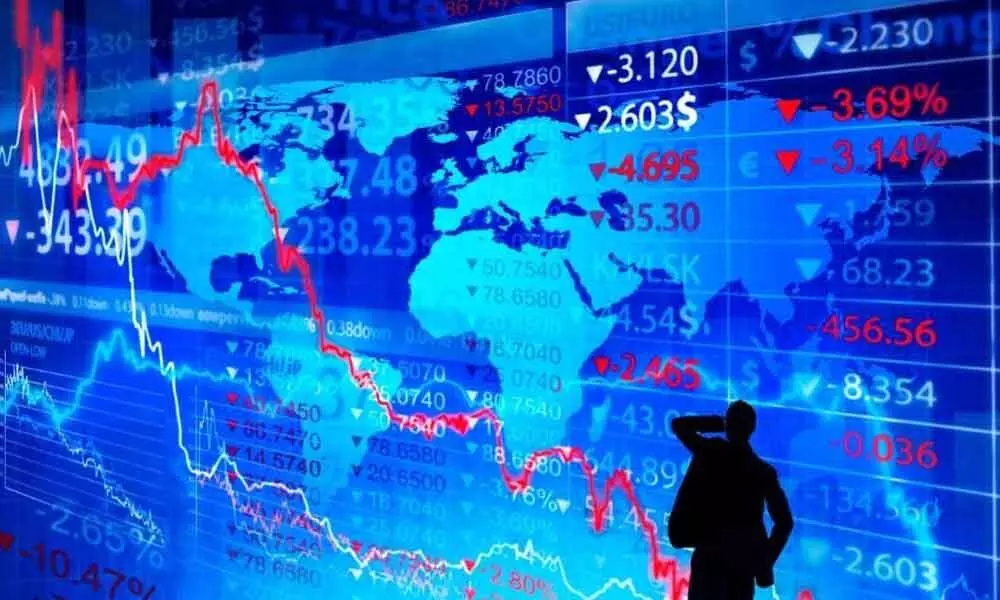Live
- Heatwave driving elevated blackout risk in Australia's most populous state
- Two autopsy assistants of RG Kar arrested on extortion charges
- Tigress ‘Zeenat’ released into wild in Similipal
- Winning bypolls does not mean Karnataka govt is scam-free: BJP
- SIT and CBI Investigate Adulterated Ghee in Srivari Laddu Prasadam
- 'Hum Honge Kamyaab': MP's social awareness campaign for women's safety
- Kavitha demands Congress govt to implement Kamareddy Declaration on Backward Classes
- Why Switching to Bluesky is Best Move for Your Social Media Experience
- Telangana Rejects Rs.100 Crore Donation from Adani Group: CM Revanth Reddy
- MUDA case: Petitioner claims Lokayukta officers shielding accused
Just In

Investors need to be stock-specific
Undoubtedly, we’ve to thank the US Fed for the extraordinary sharp reversal in equity assets across the world since the dip in March. Of course, it was followed and accompanied by the unparalleled fiscal response by the government’s across the globe.
Undoubtedly, we've to thank the US Fed for the extraordinary sharp reversal in equity assets across the world since the dip in March. Of course, it was followed and accompanied by the unparalleled fiscal response by the government's across the globe. Except the EU, which made a deliberate coordinated act, the rest of the world just coincided their response to the raging pandemic first with lockdowns of their economies then with monetary and fiscal measures. The unprecedented liquidity infusion ever in the history of mankind concurred with a never ever event of voluntary productivity closures.
After being awed by the steep crash in the global equities, the way they recovered is nothing short of stunning, something that almost none had anticipated. As the lockdowns gave way to gradual unlocking of economies, the markets began to perk up.
The negative interest rate regimes in a few countries, zero in many other and historic lower interest rates across the rest of the nations have increased the flows towards the riskier assets by investors trying to earn higher real returns. This was one of the critical reasons for the hardening up of gold into historic highs.
Even as the economies warmed up to measured opening, many businesses are ground to a halt and the rest are only trying to get back to normalcy. Though, there're a few sectors/businesses which are thriving in this pandemic, those remain a minority. While people await the news of vaccines, the developments are only the beginning of the hope, as the actual administration would take a lot of time. This makes many advisors and investors to point out the disconnect of equity markets with the actual economy.
Is this insouciance or are we misreading the markets? A further analysis of Nifty 50, we could break the current market performance and the sectors on how they're doing. The sectoral weightages of the indices as on the Feb-20 when the markets are at historical highs, the largest contributor was from the Financial services (Fin Serv) which stood at 37.21 per cent, the next bigger weightage was from Information Technology (IT) at 13.28 and that of the Consumer Goods (FMCG) stood at 11.94 per cent while the other larger sector by weightage was Oil & Gas with 11.69 per cent.
The next month i.e. the march-end data shows that the Fin Serv was trimmed to 36.51 per cent and that of Oil & Gas down to 11.69 per cent, while the composition of the FMCG and IT respectively were at 13.58 per cent and 15.04 per cent. The contribution of pharma to the broader index has increased to 2.72 per cent. The situation was grim at that time and traditionally defensive sectors of FMCG, IT and pharma turned favorites, thus reflecting their improved contribution to the index.
Combinedly, these five sectors have taken up a lion's share of 79.01 per cent by end-March in the index. Now, if we check the latest composition of the Nifty-50, Fin Service which still is the largest sector by weightage stands at 33.16 per cent down by little over four percentage points or a negative 10.89 per cent from the Nifty all-time highs. During the corresponding period, Oil & Gas sector has managed to grow by 42.94 per cent (though largely due to the price rise of Reliance Industries), while the pharma had an across the board participation with a whopping 52.89 per cent, the composition bettered at 3.18 per cent.
The mid-March market low was a massive 37 per cent fall from the all-time highs of the NIFTY in mid-Feb of 2020. The liquidity driven market has given a fillip of about 45 per cent from the march-lows to the end-July index levels. While this looks like unreal for the market participants, what needs to be seen is that the market has been discounting the various changes happening to the market and also building the future cashflows of those sectors.
Though the entire experience was surreal for the investors, it also highlights the importance of staying in the market. Only those investors, who were vigilant to the change and had decent exposures to the rotating sectors, were benefited. Of course, in the hindsight everybody could be correct, while there's no guarantee that these sectors continue to outperform, only those who've read the situation better made profits. This also emphasizes the role of having a good advisor. In conclusion, the markets are not completely incorrect in their approach, maybe we weren't farsighted enough.
(The author is a co-founder of "Wealocity", a wealth management firm and could be reached at [email protected])

© 2024 Hyderabad Media House Limited/The Hans India. All rights reserved. Powered by hocalwire.com







